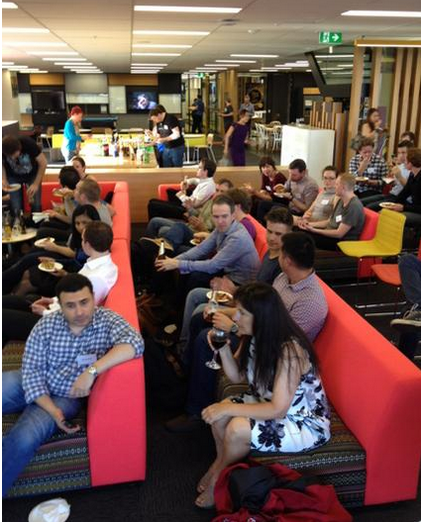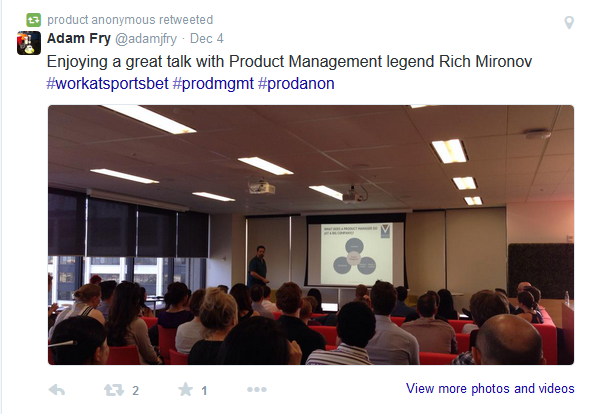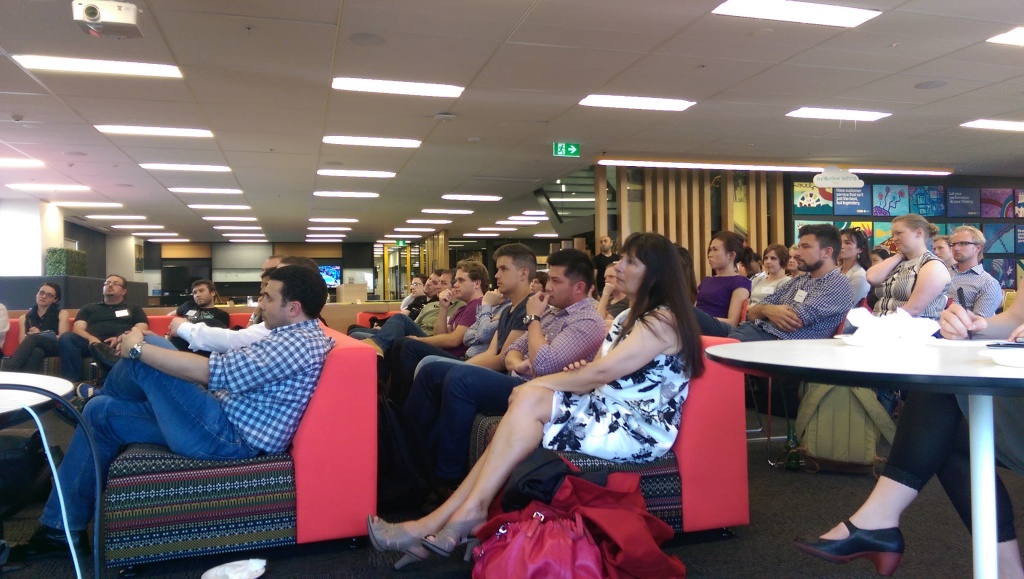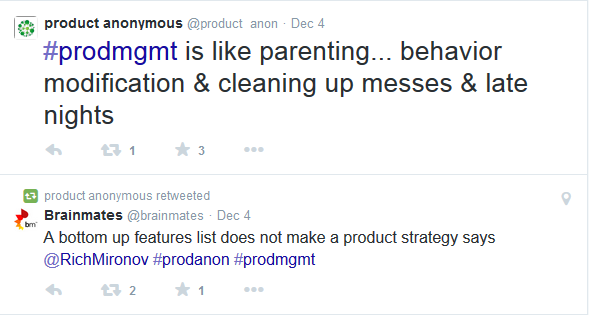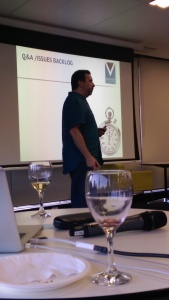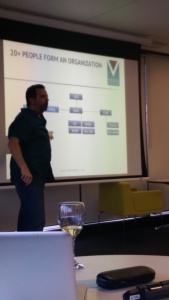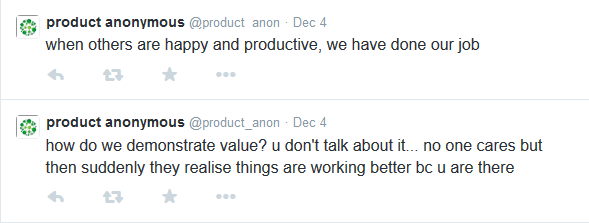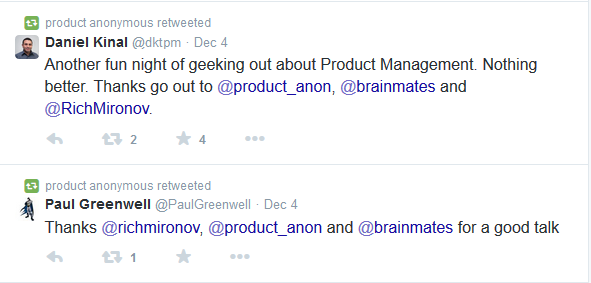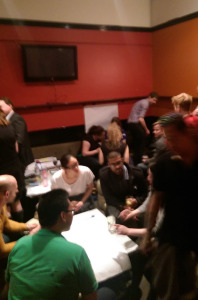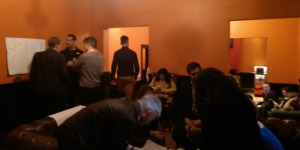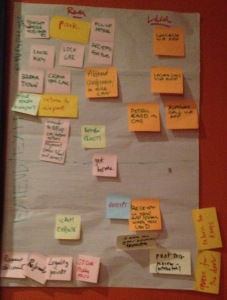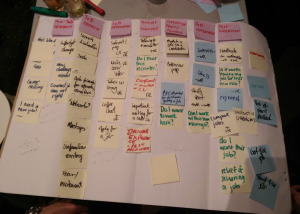Last week, General Assembly hosted a panel session on Breaking into Product Management for those interested in becoming a product manager or wondering how to get their 1st product manager job.
The panel included myself Liz Blink, Adam Fry from Sportsbet, Laura Cardinal from Xero and Brad Dunn from Nazori with Julien Viard from Rowben Consulting facilitating the discussion.
How to get started in Product Management
A theme that ran through each of the panelists’ presentations, was how they got started in the field, a taste of what the job is like and advice for those in the audience.
Laura Cardinal / Xero
Laura kicked off with her story – that she had been doing product management before she had her first job with those words in the title. She was working in customer service, and still dreaming of becoming a famous rock star, when she first was struck by a frustration at a problem that could be solved better, but had no idea how to go about implementing that idea.

Laura was working at a water company where plumbers would come in each day, on their way to their jobs to pay for and collect a print out of the house pipes for the job they were doing. Every day she’d listen to plumbers grumbling about the amount of time this took up, and in turn, she’d listen to the customer service reps grumble about the plumbers choice of deodorant – or lack there of.
The light bulb went off and what if they created a website where plumbers could access, download and print their own plans. With the amount of money that would save the business on printing paper and customer service, they wouldn’t even have to charge for it. At the time, Laura knew nothing about development, but surely that it could be done.
Laura talked to everybody that she could, would share her idea and solution with anyone who would listen and eventually she got the buy in she needed to implement her idea. All that talking and sharing and testing helped work through the refinement and iteration of the idea, and so they built the product. Laura had done enough convincing and managed to build a team around her to develop and launch what was called ‘Plumbers on-line’ and it still exists today… well a complete reincarnation of it anyway……
Her advice to those in the room who wanted to be in this space was to “fill your own scorecard with the skills you need” so that when you go for a product management role you already have everything you need to step into the role – without needing the title to sit on your resume.
Brad Dunn / Nazori
Brad drew our attention to the Apple retail experience and used that to highlight how paying attention to the right kind of data will really help you in a product management career.
His focus was very much on asking questions & using data until you really know why people do what they do. The Apple retail experience is one that very much contributes to the success of the product and is very precise. Nothing is done by accident in its layout including the angle the phones are rested on the bench.
The man behind this design, Ron Johnson, pioneered the concepts behind the store and came up with the Genius Bar. After Apple, he repeated his success and helped Target become “hip”.
However, this was not necessarily an easily repeatable approach because the exact opposite outcome occurred when he transformed JC Penney. Their stock price rose upon the announcement of his joining the company but the approach was the wrong one for JC Penney, the makeover did not work, the stock price plunged and he was fired.
Brad put this down to fundamental “attribution error” whereby one assumes that one internal element will determine the outcome & ignores that many other factors contribute to an outcome. In this instance, Ron Johnson helped Apple succeed with his retail store concept but there were other factors contributing to his success.
How do you avoid falling into the same trap & getting caught by this bias? Brad provided some guidance and suggestions. He suggested usability tools such as Usability Hub to get your designs and screens tested, get some A/B testing into your work, and he liked mixpanel over Google Analytics, especially the funnel component. Brad also had some favourite books to call out – he LOVES Eric Ries’ The Lean Startup and he said he lends the book Ten Faces of Innovation, by IDEO co-founder Tom Kelley, to clients before they start on projects together (& the clients rave about it).
Liz Blink / Sensis & Product Anonymous
Like Laura, I have also followed a rather unobvious path to being a product manager and was surely one before I stepped into a job with that title. I think product management is very much a mindset.
Having started out my life as a scientist I often get the question of “well how the heck did you get to this then” :-). The mindsets and the skillsets are so resusable – the curiosity that wants to get to the bottom of every problem, the need to know why, why, why, and the testing of a hypothesis to determine if that theory is true could describe either profession.
I talked a little about what you want to look for when looking for a product manager job- complete with a Venn diagram – it isn’t really a product management talk without one!
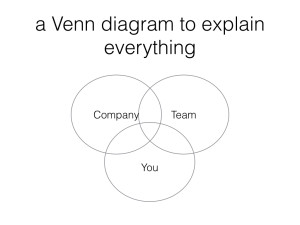
I was interested in what an individual might want to seek out for themselves as they choose a company to work for. Depending on the stage they are at, it might be looking for good support, mentoring and an opportunity to work at a company where you can eventually move into that role from within the company. This will give you a great opportunity to prove you have the mindset – something that is harder to prove than we might like to admit!
One circle in this Venn is to check where the company is at in its maturity of leading product managers, where do you sit in the organisation, who do you report to, what department are you in?
The other circle is what can you bring to the team? Do you have lots of technical skill but need to build up your people skills, your influence skills, your customer interview skills?
Every time you take a step, you want to understand what you need to bring to the team to ensure success, but also what you can learn from your team so you are developing your skill sheet further.
My last thought for my 5 minutes was really that as a product manager you are a little schizophrenic – you have to be empathic and constantly in tune with your customers and yet you will need to make tough, hard ass decisions – and you will have to make those calls as no one else will. I borrowed my quote from William Hsu – the constant balance between the fuzzy people stuff and the precise tech stuff. It’s a blast!
Adam Fry / Sportsbet
Last, but certainly not least, the polished Mr. Fry wrapped it all up beautifully for us with some fabulous pearls of wisdom.
Adam said that while he has been doing product management for awhile now, not a single one of those jobs has been the same so he talked a little about how a product manager should act.
If you mimic the process you won’t find yourself very successful nor it a very satisfying career! The core of the role stays the same though – you are the expert, the evangelist and a super sleuth. It is a little like being part of the United Nations – no authority & always the mediator. You are constantly challenged in everything you do, as someone always has an opinion and idea so you need to be ready to explain, defend and back yourself and your product decisions.
Sometimes you have to let people (including customers) down. When a feature hasn’t made it, part of your role is deciding who to tell & then to break the news to that stakeholder! Not an easy one – although when you get to announce great news/features/new products are coming it makes up for the bad news days…!
Thanks!
After the session, there were some great questions from the audience and a great set of conversations happening. Thanks to General Assembly for running the session and check out their course staring in February, where the one of your speakers, Adam Fry will be an instructor.
If you are looking to get into product management, come check out a Product Anonymous session (Feb 19th is the next one) & follow us on Twitter @product_anon or any of the other social networks we live in.



